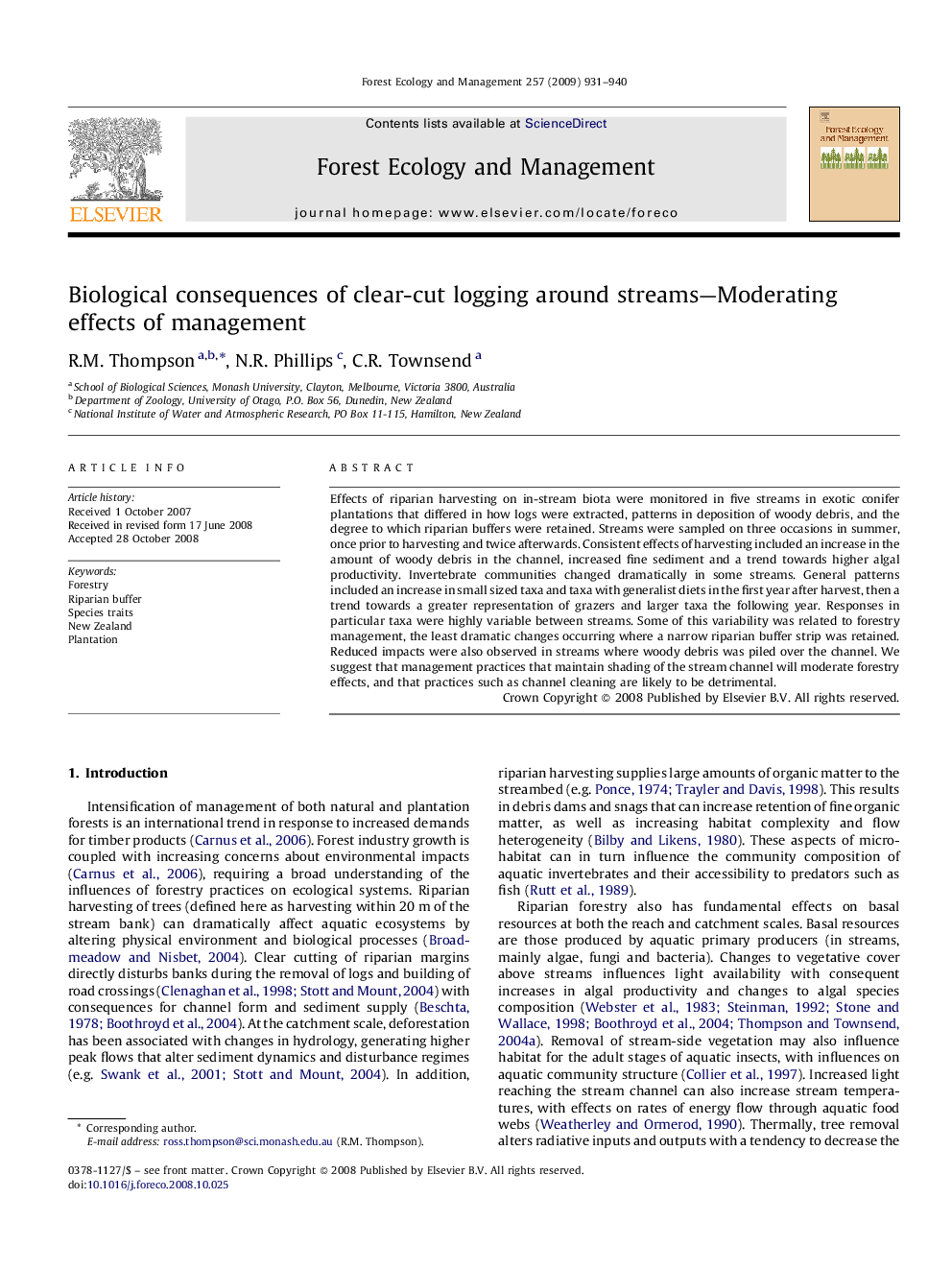| Article ID | Journal | Published Year | Pages | File Type |
|---|---|---|---|---|
| 89100 | Forest Ecology and Management | 2009 | 10 Pages |
Effects of riparian harvesting on in-stream biota were monitored in five streams in exotic conifer plantations that differed in how logs were extracted, patterns in deposition of woody debris, and the degree to which riparian buffers were retained. Streams were sampled on three occasions in summer, once prior to harvesting and twice afterwards. Consistent effects of harvesting included an increase in the amount of woody debris in the channel, increased fine sediment and a trend towards higher algal productivity. Invertebrate communities changed dramatically in some streams. General patterns included an increase in small sized taxa and taxa with generalist diets in the first year after harvest, then a trend towards a greater representation of grazers and larger taxa the following year. Responses in particular taxa were highly variable between streams. Some of this variability was related to forestry management, the least dramatic changes occurring where a narrow riparian buffer strip was retained. Reduced impacts were also observed in streams where woody debris was piled over the channel. We suggest that management practices that maintain shading of the stream channel will moderate forestry effects, and that practices such as channel cleaning are likely to be detrimental.
